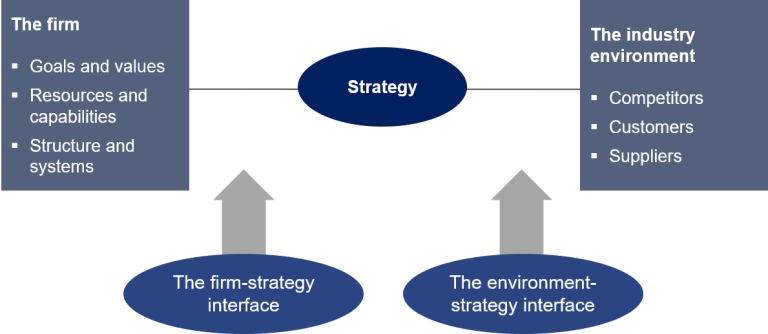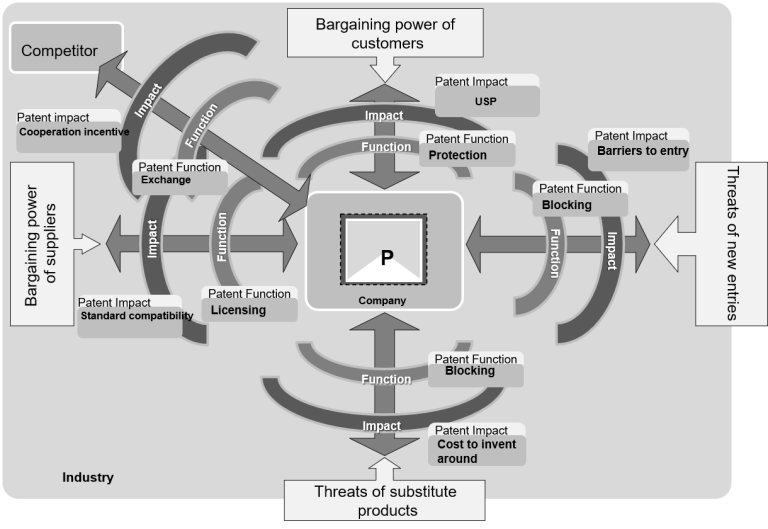Start of the Certified University Course on “IP Strategy Development” on 15th of June
The Certified University Course in IP Strategy Development at the University of Strasbourg, CEIPI, starts on 15th of June. The Course is provided through one of the most advanced distance learning platforms worldwide. Participants are flexible in their education. Learning without time pressure, as well as with a job and family are possible. From the consistent glossary to examples, the certificate provides a comprehensive perspective on every topic, but also an up to date overview on modern IP Management. The students benefit from a long-standing teaching practice in IP-Management which has been established at CEIPI since 2005. Information about the registration for this and other Certified University Courses can be found here.
 The core idea of an IP strategy is to align in with the overall business strategy, so that only those IP are filed, which are worth filing. For that the idea of business models must be understood. A business model describes how a company creates values for customers and provides them for customers. A value is the ability of a good to serve the needs. A business model describes the logical connection, the way in which value creation is carried out in order to generate a benefit for the customers.
The core idea of an IP strategy is to align in with the overall business strategy, so that only those IP are filed, which are worth filing. For that the idea of business models must be understood. A business model describes how a company creates values for customers and provides them for customers. A value is the ability of a good to serve the needs. A business model describes the logical connection, the way in which value creation is carried out in order to generate a benefit for the customers.

This logical interaction is dominated by two different business perspectives: On the one hand, there is the question of how the costs of value creation and provision arise, i.e. which costs go hand in hand with the production of a customer benefit offer. On the other hand, there is also the question of what possible returns can be generated from customer satisfaction. This is the skimming off of customers’ willingness to pay.
These two fundamental questions characterize the two sides of a business model: the resource perspective and the market perspective. The resource side focuses on the creation of values through a value creation architecture and through the use of key resources in processes with the help of core competencies. The cost effect in the business model is defined by the resource side.

The market side is characterized by the market access and the market position of the company and its services as well as the differentiation and unique position compared to the competition. The earnings side of the business model is described on the market side.
Innovative business models have always gone hand in hand with technological developments and changes in market needs. Some well-known examples: Dell has revolutionized the supply chain of custom personal computers. Lego has digitized the system toys and the design of kits. Gillette has made the cheap hand razor and expensive retrofit blades business popular. Xerox has developed the pay-per-use business model to make its expensive photocopiers attractive to the market. Intel has placed computer processors at the center of its business, coming from memory chips, and has entered into a synergetic collaboration with IBM.
The strategic models used to describe the use and expected impact of IP on the resource side and the market side are fundamentally different.
On the resource side, the strategic goal is to design through the use of IP VRIN resources. VRIN is an acronym and stands for the first letters of the properties valuable, rare, imperfectly imitable and non-substitutable. On the resource side, it is important to identify the resources that are valuable for value creation and to make them rare through the use of IP, i.e. they cannot be copied and ideally not even substituted.

Examples of such IP-protected resources are Apple’s design skills, Lego’s brand strength and production precision, DELL’s logistics skills and Intel’s process security.
On the market side, the strategic goal is to influence market forces through the use of IP. A distinction is made between six market forces:
- Competition within the industry
- The negotiating power of suppliers
- The bargaining power of customers
- New companies entering the industry
- Substitutive offers
- Complementary service offers.
An example of complementary offerings are peripheral devices for computers, such as a printer, a monitor and a mouse or a photo camera in a mobile radio device.
Typical IP-based measures to influence these market forces include building brand strength and brand loyalty, for example through superior, exclusive and IP-protected customer benefits, so-called unique selling propositions (USPs), technology standards, interfaces, compatibility and interoperability. From the case studies from various branches with SMEs, these logics can be used to adapt strategic approaches to the own business in place.
The university certificate IP strategy comprises issues like:
- How to define your IP strategy to align with the business strategy
- Strategic IP Management – file only what is worth filing
- Market-driven Approaches for Optimizing Value-based IP Management – An Industry-Specific Use-Case
- Protecting digital business solutions like apps, use cases, business models
- How can I use patent information as a building block of my IP strategy?
- How will third party IP influence my strategy and how can I find IP, especially patent information?



